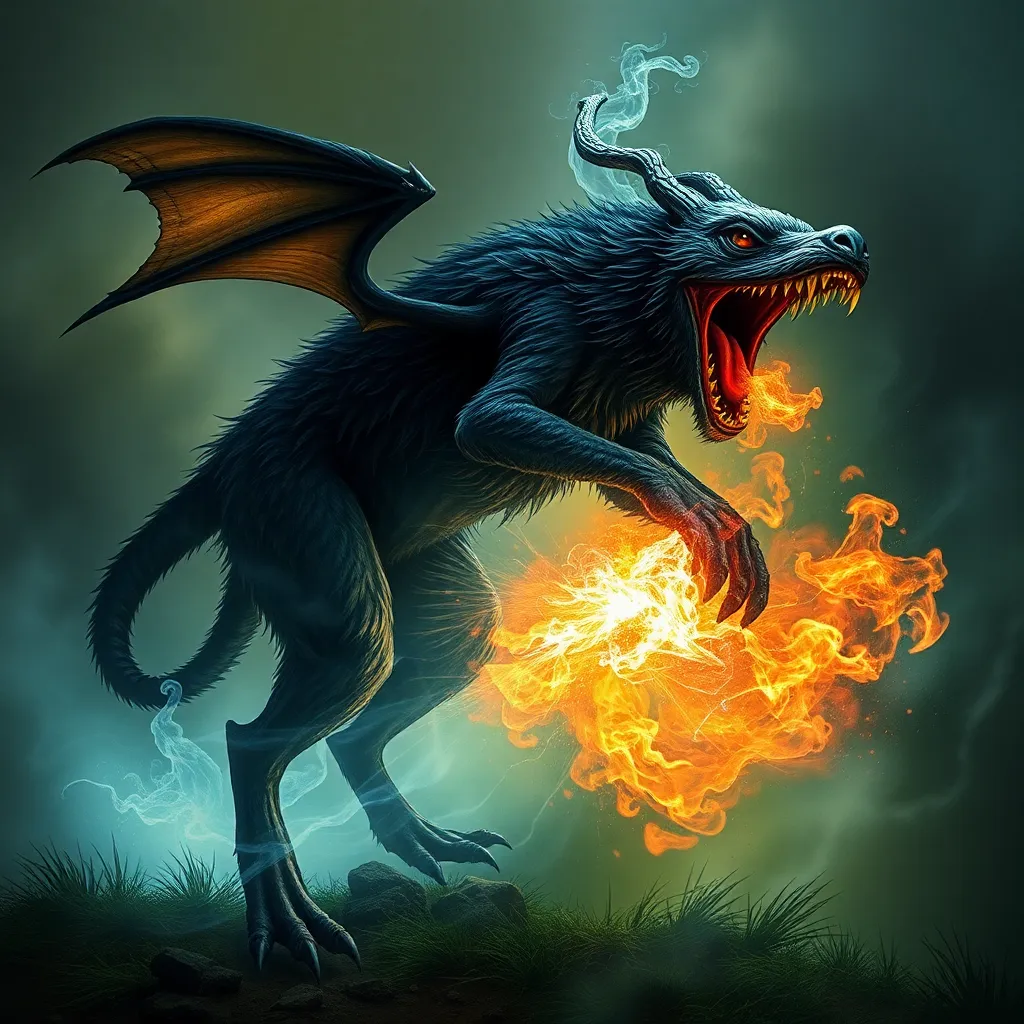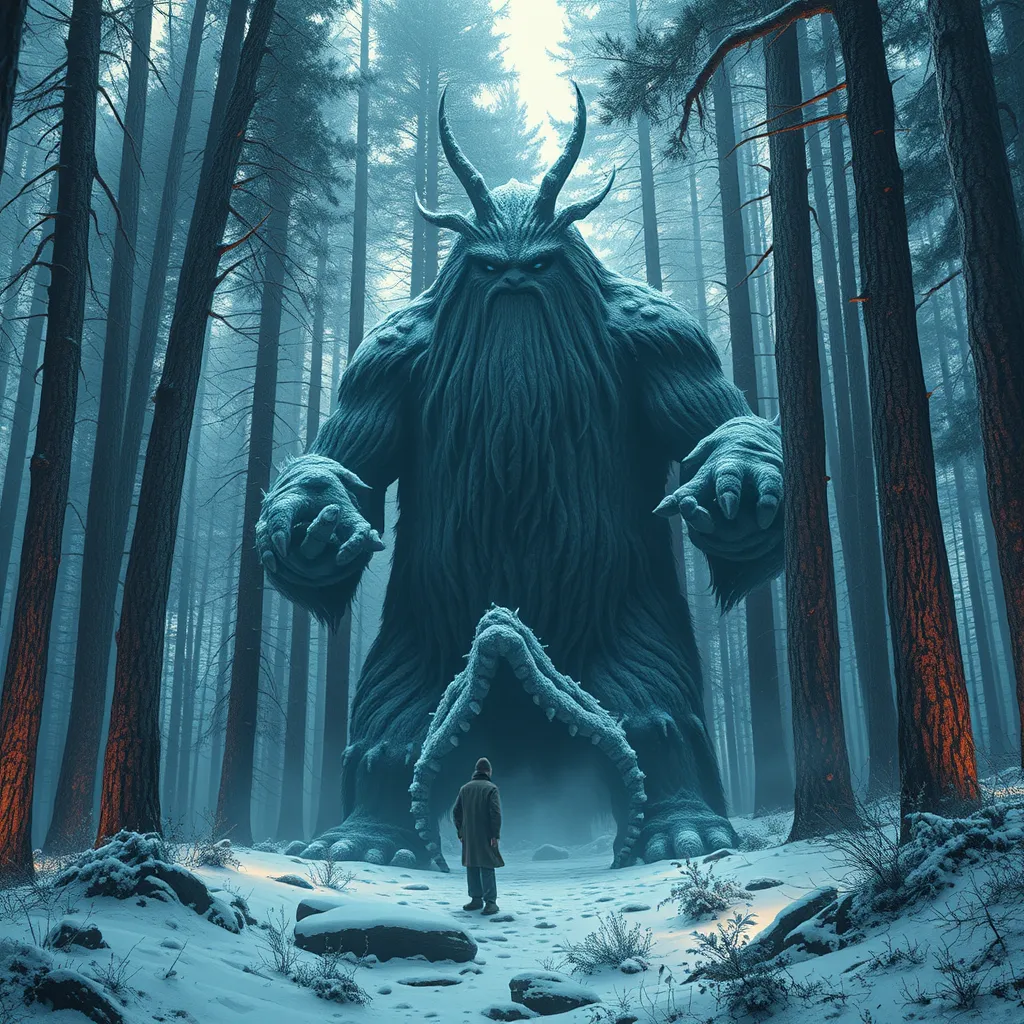The Chupacabra and the Supernatural: A Comparative Study of Mythological Creatures
I. Introduction
Mythological creatures have fascinated humanity for centuries, serving as embodiments of cultural fears, hopes, and mysteries. These beings often transcend the boundaries of reality, residing in the realms of folklore and legend. Among these enigmatic entities is the Chupacabra, a creature that has captured the imagination of many and incited both fear and intrigue. This article aims to explore the phenomenon of the Chupacabra in depth, comparing it with other mythological creatures to understand its significance and the broader implications of supernatural beliefs.
II. Origins and Cultural Significance of the Chupacabra
A. Historical background and sightings
The legend of the Chupacabra began in the mid-1990s in Puerto Rico, where reports of livestock, particularly goats, being found drained of blood sparked widespread panic. The term “Chupacabra,” which translates to “goat-sucker,” was coined after these incidents. Sightings quickly spread across Latin America and into the United States, with various descriptions appearing in the media.
B. Regional variations in the Chupacabra myth
The Chupacabra myth is not monolithic; it varies significantly across regions. For instance:
- Puerto Rico: Typically described as a reptilian creature with spines along its back.
- Mexico: Often depicted as a canine-like creature, resembling a dog with mange.
- United States: Reports vary, with some sightings resembling known animals like coyotes.
C. The Chupacabra’s role in local folklore and community identity
In many communities, the Chupacabra has become a symbol of local folklore and cultural identity. It has sparked discussions about the supernatural and the unknown, serving as a modern myth that communities can rally around, often used to explain the unexplainable in their environments.
III. Characteristics and Descriptions of the Chupacabra
A. Physical traits and variations in depictions
Descriptions of the Chupacabra vary widely, with some common physical traits including:
- Reptilian skin, often described as green or gray.
- Spines or quills running down its back.
- Two large eyes, sometimes glowing in the dark.
These physical traits contribute to the creature’s fearsome reputation, although many reported sightings feature variations that align more closely with known animal species.
B. Behavior and feeding habits
The Chupacabra is primarily known for its alleged bloodsucking behavior, particularly targeting livestock. Reports typically describe it as:
- Stealthy and nocturnal.
- Preferring to attack small animals, such as goats and chickens.
- Exhibiting unusual predatory tactics, often leaving behind drained corpses.
C. Comparison with other mythological creatures
The Chupacabra shares similarities with various mythological creatures, such as vampires and werewolves, particularly in its bloodsucking behavior. However, its distinctive characteristics and modern origins set it apart from more traditional folklore figures.
IV. The Supernatural: An Overview
A. Definition and attributes of supernatural beings
Supernatural beings are often defined by their ability to transcend the natural laws of physics and biology. They are typically associated with:
- Unexplained powers or abilities.
- A connection to the spiritual or mystical realm.
- The capacity to invoke fear or awe in humans.
B. The role of the supernatural in human culture
Supernatural entities play a significant role in shaping cultural narratives, providing explanations for phenomena that were once mysterious. They serve as cautionary tales, moral lessons, or reflections of societal fears and hopes.
C. Common themes and motifs in supernatural folklore
Across various cultures, supernatural folklore often includes recurring themes such as:
- The struggle between good and evil.
- The consequences of human actions.
- Transformation and the unknown.
V. Comparative Analysis: The Chupacabra and Other Mythological Creatures
A. Similarities with creatures like Bigfoot and Mokele-Mbembe
The Chupacabra shares certain traits with other mythological creatures, such as Bigfoot and Mokele-Mbembe. Each represents a cultural response to the unknown, embodying local fears and the allure of the unexplored.
B. Differences in origins and cultural contexts
Unlike the Chupacabra, which emerged in the late 20th century, creatures like Bigfoot have roots in earlier folklore. This difference highlights how myths evolve in response to contemporary issues, such as environmental change or societal fears.
C. The impact of environmental factors on mythological narratives
Environmental changes, such as urbanization and climate change, have influenced the narratives surrounding mythological creatures. As habitats shrink and ecosystems shift, the myths adapt, often reflecting the anxieties of the communities they originate from.
VI. Psychological and Sociological Perspectives
A. The appeal of mythological creatures in modern society
In our modern, increasingly rational world, mythological creatures like the Chupacabra continue to captivate the public imagination. Their allure lies in their ability to offer an escape from the mundane and a connection to the mysterious.
B. The role of fear and fascination in the Chupacabra myth
The Chupacabra myth elicits both fear and fascination, serving as a reflection of societal anxieties regarding nature, safety, and the unknown. This duality enhances its narrative power and cultural relevance.
C. Collective psychology and the creation of folklore
Folklore often arises from collective psychological phenomena, where shared fears and experiences shape narratives that resonate with communities, reinforcing cultural identity and collective memory.
VII. The Chupacabra in Popular Culture
A. Representation in media, literature, and art
The Chupacabra has been depicted in various forms of media, including television shows, movies, and literature. Its portrayal ranges from terrifying monster to misunderstood creature, showcasing the flexibility of its narrative.
B. The evolution of the Chupacabra myth in contemporary society
As society evolves, so too does the Chupacabra myth. It has adapted to changes in technology and culture, often being reinterpreted in light of current events and societal fears.
C. The influence of globalization on mythological narratives
Globalization has facilitated the rapid spread of the Chupacabra myth across borders, allowing for cross-cultural exchanges that enrich and diversify its narrative. This phenomenon highlights the interconnectedness of modern societies and the universal appeal of myth.
VIII. Conclusion
A. Summary of findings from the comparative study
This comparative study of the Chupacabra and other mythological creatures reveals the complexity and richness of folklore. The Chupacabra serves as a modern myth, reflecting contemporary fears and cultural identities while maintaining ties to older traditions.
B. The enduring legacy of the Chupacabra and mythological creatures
The enduring legacy of the Chupacabra showcases the power of myth in human culture. As long as there are mysteries to explore and fears to confront, mythological creatures will continue to thrive in the human imagination.
C. Future directions for research and exploration in folklore studies
Future research in folklore studies should continue to explore the dynamic relationships between myth and culture, examining how contemporary issues shape our understanding of these creatures. A multidisciplinary approach, incorporating psychology, sociology, and environmental studies, will enrich our comprehension of folklore’s role in modern society.



